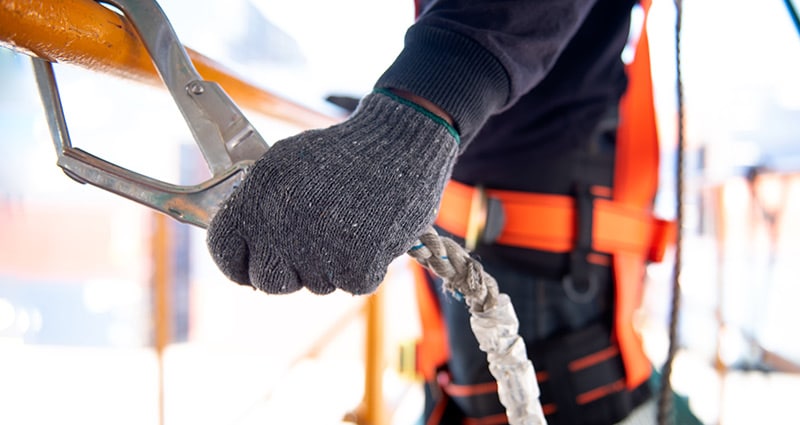We all slip up every now and then. But falls can be serious business in the workplace—for you and for your place of work, too.
According to the U.S. Department of Labor Statistics, 15% of all accidental deaths are due to some sort of slip or fall.
Michael Brown, APRN, FNP-C, of St. Francis Medical Center Occupational Medicine, shares some insights into workplace safety and fall prevention.
Falls are typically linked to improper footwear (such as high heels or flimsy shoes like flip-flops or Crocs) or substances on the floor like water, oil or sand, Brown says. Also, a lack of proper workplace safety standards such as guardrails, signage and adequate training can lead to falls.
It’s important to wear the proper footwear in certain workplaces, such as closed-toe shoes with slip-resistant grips, to help stabilize the body as well as prevent foot or toe injuries.
According to the Occupational Safety and Health Administration, workers who are six feet or more above a lower level are at risk for serious injury or death if they should fall, so safety precautions are of the utmost importance in these settings.
According to the Centers for Disease Control and Prevention, the construction industry experiences the highest frequency of fall-related deaths. Interestingly, healthcare workers have one of the highest rates of nonfatal slips, trips and falls, along with wholesale and retail industry workers.
Those most at risk of fall injuries work in:
- Healthcare support
- Building cleaning and maintenance
- Transportation and material moving
- Construction and extraction occupations
And while the U.S. Bureau of Labor Statistics reports that missed days from work due to falls, slips and trips have dramatically decreased by 13.3% from 2019-2020, that percentage is likely on the upswing as more people return to onsite work since the pandemic.
St. Francis Medical Center’s Level III Trauma Program and Our Lady of the Lake’s Trauma Center—recently designated as a Level I trauma center—both report falls as the No. 1 injury that brings trauma patients to these hospitals.
Brown says that while slippery floors or poor footwear are major culprits of falls, such accidents can also happen when lifting heavy objects. Not using proper technique can put you off balance or create too much stress on your legs, knees and back.
This article from Verywell Health provides some insight into proper technique for lifting heavy objects, but the basics of the techniques are:
- Plan ahead before lifting heavy objects
- Lift close to your body
- Keep your feet shoulder-width apart
- Bend your knees while keeping your back straight when lifting
- Tighten your core (stomach muscles)
- Lift with your legs, not your back
- Keep your eyes up and focus to maintain a better spine position
- Do not twist or bend when carrying or transferring objects
- Most importantly, if you are straining, get help
“Workplace safety is important and following these simple steps can prevent falls as well as back injuries when lifting,” Brown says.




